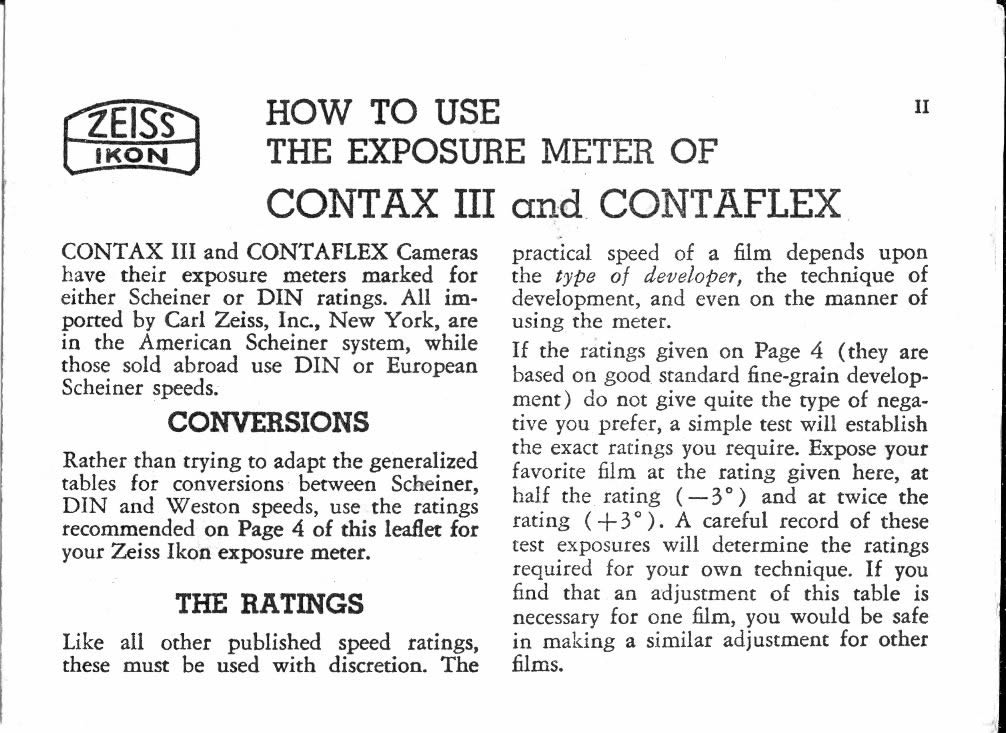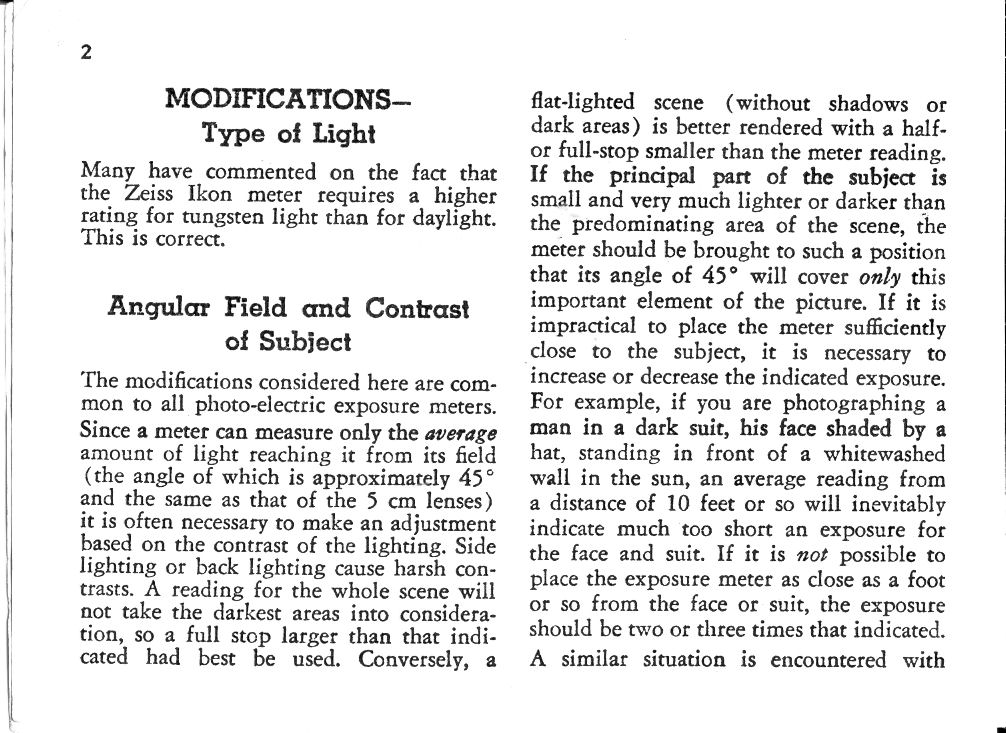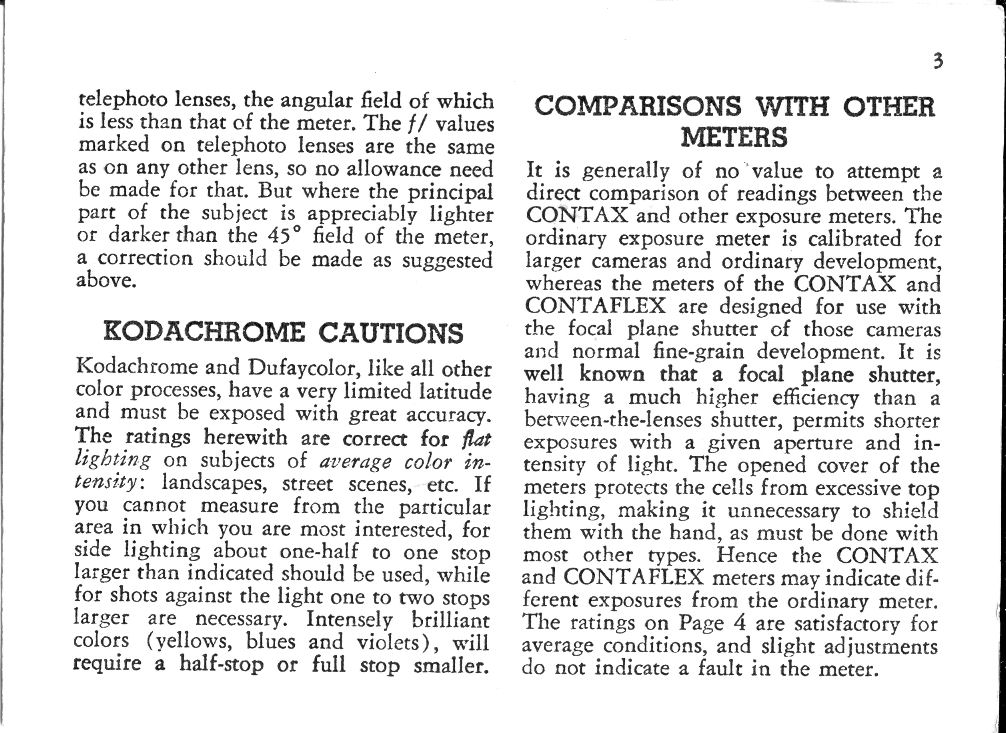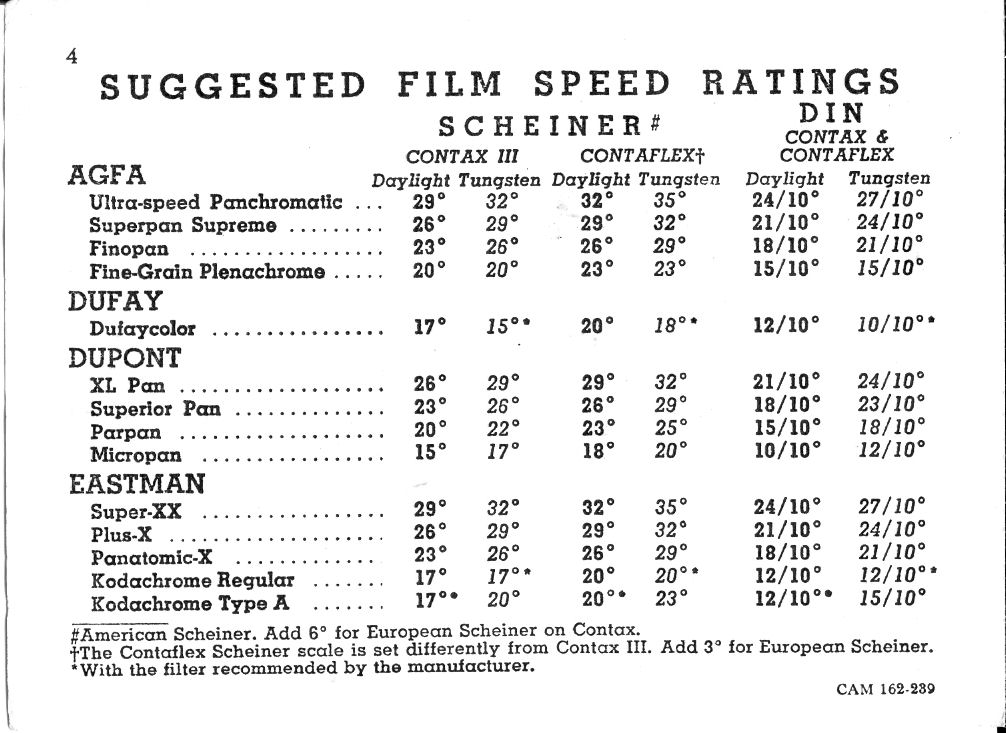For Sale:
1939: Zeiss Advice about Zeiss Light Meters Good Today
- Home
- Services
- Camera Equipment Sales
- Cameras for Sale
Zeiss Ikon Contax Camera Repair
A home for your Zeiss Ikon Contax, Contarex or Super Ikonta camera!
Zeiss Advice about How to Use A Light Meter is Valid Today
In 1939 Zeiss published this very rare and extremely useful pamphlet advising the owners of Zeiss cameras with light meters about how to use and interpret the results obtained from the light meters in their camera. This little pamphlet contains all of the useful advice any photographer will ever need about how to use a light meter with the films produced today. Here it is in its four tiny pages:




There are two very valuable bits of information in this pamphlet:
The first is contained on page 3, "Comparisons with Other Light Meters" where the efficiency of focal plane shutters is discussed. This is information every owner of a camera with a focal plane shutter should consider.
The second is page 4, "Suggested Film Speed Ratings". The most important information on this page is the word "Suggested". All film speeds are suggested by the manufacturer. Photographic beauty is in the eye of the beholder and this means that the actual film speed a film has depends just as much on how the film is developed and printed as it does on how it is exposed.
Since the development of silver based photography there have been many film speed rating schemes with various names all based upon two basic schemes of rating the way a film responds to light:
One method uses a densitometer measuring the film's response to being exposed to a standard step tablet when the film is developed using a very precisely controlled development procedure and a specified developer (GE, Weston, Scheiner, DIN).
The other methods were based upon an audience rating of print "goodness". This procedure involves the film being developed using a precisely controlled development procedure using a specified developer. Then the negatives are used to make prints using a standard paper developed using a very precisely controlled procedure and a standard developer. The prints are then displayed under specified lighting conditions and viewed by a large audience. The prints getting the best audience responses determine the film speed. This is the method used today called the "ISO" system that used to be called the ASA system.
If you are not an average photographer and make your own prints you can expect you will be using the manufacturer's "suggested" film speed as a starting point.
Another thing to keep in mind is that a lot of science and technology has gone into making modern films "goof proof". Modern films use specially shaped and sized sliver grains instead of a random distribution of various sized and shaped grains as was the case in 1939. Also, most modern films have two emulsion layers. One layer is one f stop faster and the other one f stop lower than the film's rated speed. This greatly increases the "printability" of negatives printed in print making machines. Another factor not present in 1939 films is the use of extremely chemically sophisticated development restrainers and enhancers in the film emusions that tend to balance a negative out when over or under exposed. These high tech. enhancers are most often used in color films but are also used in some black and white films..
